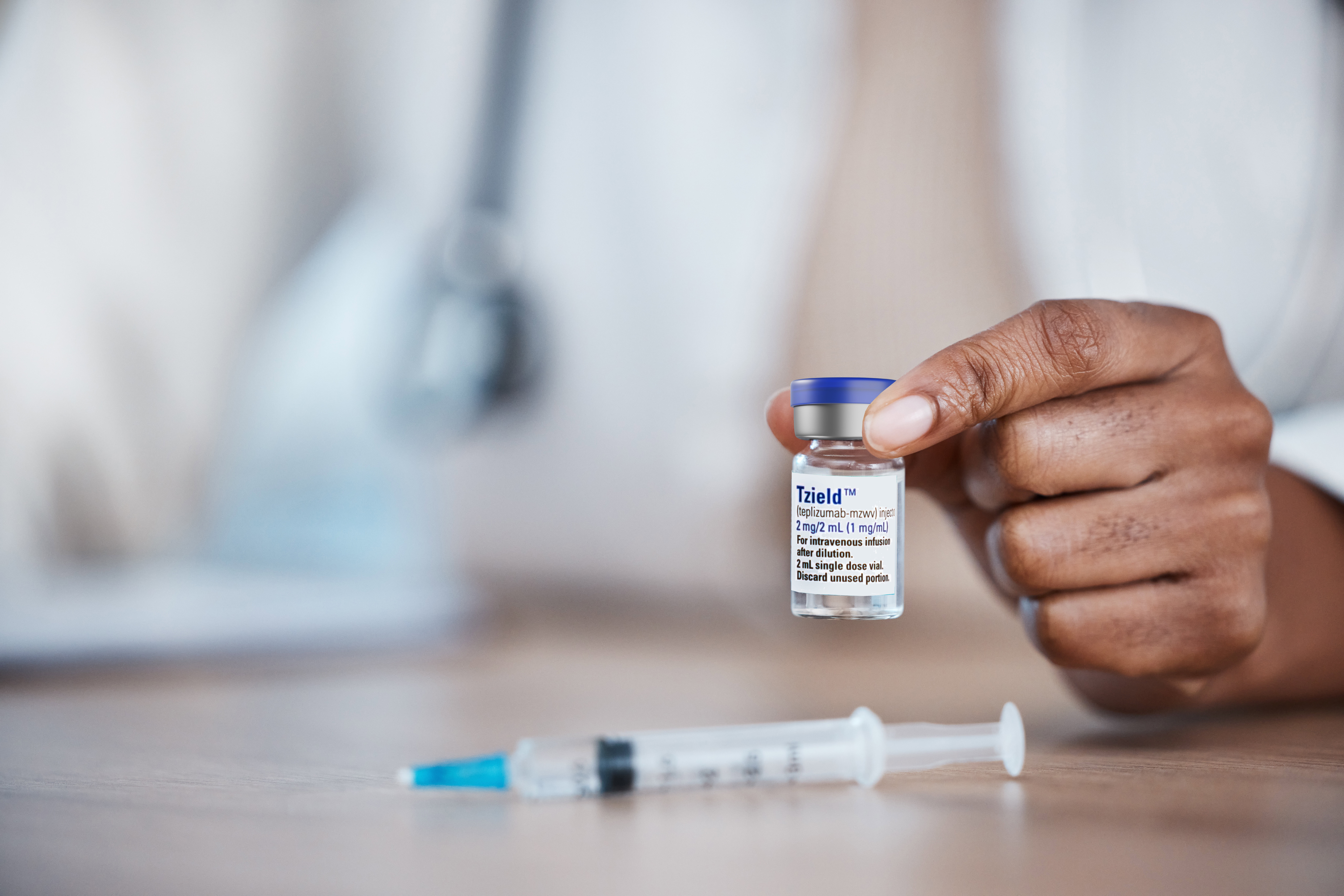
This past week, the FDA and Sanofi, the maker of Tzield, made an important announcement. Tzield, the first disease-modifying therapy approved for delaying onset of stage 3 type 1 diabetes (T1D) in people with stage 2 T1D, has been accepted into the FDA Commissioner’s National Priority Voucher (CNPV) program for people with stage 3 T1D.
Here’s what it means—and why.
The FDA Commissioner’s National Priority Voucher (CNPV) Pilot Program
The CNPV program aims to accelerate the drug review process for companies aligned with U.S. national priorities that address a large, unmet medical need while maintaining the FDA’s rigorous standards for safety, efficacy, and quality.
This program endeavors to reduce the review time for products from 10-12 months to 1-2 months. However, the program does not guarantee approval and the FDA reserves the right to determine the best course of action for the product’s being reviewed.
On Friday, October 17, the first 9 recipients of vouchers were announced, and Sanofi received one for Tzield in stage 3 individuals.
Why Tzield?
In short: the FDA recognizes there is a large unmet need in the T1D population, and Tzield has the potential to address these needs.
Sanofi’s Tzield is the first disease-modifying therapy approved to delay onset of stage 3 T1D in people with stage 2 T1D. (Stage 2 T1D is indicated by the presence of multiple autoantibodies and abnormal blood sugar levels, but individuals are not requiring insulin therapy yet). Tzield, which has been supported by Breakthrough T1D for decades, has been a gamechanger in T1D as it’s the first therapy for this disease that addresses the root cause of T1D, not the symptoms. It targets the T cells that are responsible for destroying insulin-producing beta cells, slowing down the autoimmune processes that cause T1D. In stage 2, this means a stage 3 diagnosis is delayed an average of 3 years.
The problem: it’s only approved for use in stage 2 T1D. The vast majority of people in stage 2 don’t even know they have early T1D because there are no external symptoms. The only way of knowing is to get screened for risk markers of T1D. While the number of individuals screened for T1D has dramatically risen in recent years, most people who may benefit from the drug progress to stage 3 before they have the chance to reap its benefits—and delay onset.
Additionally, Tzield already being reviewed under the FDA’s accelerated approval program. Sanofi is continuing to study Tzield in this patient population through the confirmatory BETA-PRESERVE phase 3 study, which will provide more information on the risks and benefits of the drug in the coming years.
Breakthrough T1D has supported the development of Tzield for decades—and supports its use in stage 3 T1D.
Preserving beta cell health is critical
T1D is caused by the destruction of the beta cells, which are the only cells in the body that make insulin. The fewer beta cells a person has, the less insulin they make.
Simply put, it’s better to have more beta cells, and longer we can keep those cells alive and making insulin, the better. There are many studies that support this, but one study in particular really demonstrated the benefits.
The PROTECT Study
In the PROTECT study, Tzield was administered to newly diagnosed children and adolescents in stage 3 T1D to see if it could slow the destruction of beta cells as measured by C-peptide. (C-peptide is a natural byproduct of insulin production and a key biomarker as we evaluate the efficacy of Cures therapies).
In this study, investigators looked at newly diagnosed individuals who were administered Tzield compared with placebo and measured their beta cell function (using C-peptide) over time. The results were clear: Tzield significantly slowed the decline of beta cell function. This has real impact on the lives of people with T1D, too. People who received Tzield and therefore had higher levels of endogenous insulin production required less insulin and spent more time in range.
In summary: more beta cells are better. Tzield has demonstrated that it can help achieve that.
What happens next?
Sanofi could hear from the FDA in the next 1-2 months that Tzield has been approved for use in stage 3 T1D. If that happens, it will mean that, for the first time, individuals diagnosed with T1D have a therapy option besides insulin. This would be a historic first, allowing people to benefit from the decline in the loss of beta cells and modify the course of T1D like the PROTECT study has demonstrated.
What we’re saying
“We know two things: there is a large, unmet need in the T1D community for more therapy options, and there is significant data demonstrating the benefits of preserving beta cell health,” said Campbell Hutton, Senior Vice President, Global Advocacy. “Breakthrough T1D applauds the FDA for accelerating the review process of a therapy that can have significant positive impact for the T1D community.”